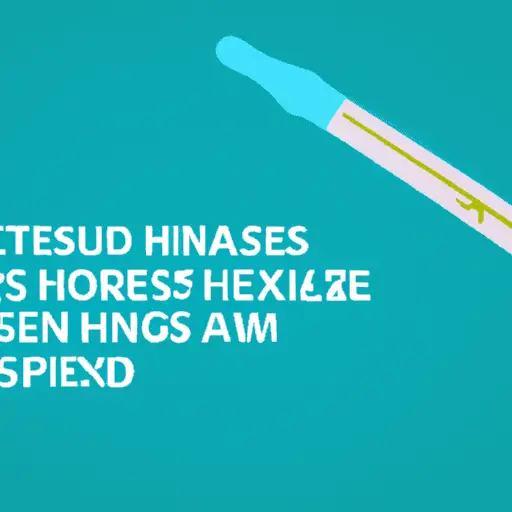Understanding Herpes Zoster (Shingles): Symptoms, Treatments, and Solutions
-
Table of Contents
- Understanding Herpes Zoster (Shingles): Symptoms, Treatments, and Solutions
- Key Takeaways
- Introduction: Unveiling the Shingles Virus
- Recognizing the Symptoms of Shingles
- Understanding the Treatment Options
- Preventing Shingles: Vaccines and Other Solutions
- FAQ Section
- 1. Who is at risk for shingles?
- 2. Can you get shingles more than once?
- 3. Can shingles be spread to others?
- 4. What are the complications of shingles?
- 5. How long does shingles last?
- Conclusion: Navigating Through Shingles
- Key Takeaways Revisited
Understanding Herpes Zoster (Shingles): Symptoms, Treatments, and Solutions

[youtubomatic_search]
Key Takeaways
- Herpes Zoster, also known as shingles, is a viral infection that causes a painful rash and is caused by the varicella-zoster virus, the same virus that causes chickenpox.
- Shingles can occur anywhere on the body but most often appears as a single stripe of blisters that wraps around either the left or the right side of the torso.
- While it isn’t a life-threatening condition, shingles can be very painful. Vaccines can help reduce the risk of shingles, while early treatment can help shorten a shingles infection and lessen the chance of complications.
- Postherpetic neuralgia is the most common complication of shingles. This condition causes severe pain in the areas where the shingles rash occurred, even after the rash clears up.
- Antiviral medicines, such as acyclovir, valacyclovir, and famciclovir, are the most effective treatments for shingles.
Introduction: Unveiling the Shingles Virus
Herpes Zoster, commonly known as shingles, is a viral infection that results in a painful rash. It is caused by the varicella-zoster virus, which is also responsible for chickenpox. After a person recovers from chickenpox, the virus can enter the nervous system and lie dormant for years. Eventually, it may reactivate and travel along nerve pathways to the skin, producing shingles.
Recognizing the Symptoms of Shingles
The first symptom of shingles is often a burning or tingling pain, or sometimes numbness or itch, in one particular location on only one side of the body. After about 1 to 5 days, a red rash appears at that site, often accompanied by fever, headache, chills, or upset stomach. The rash soon turns into groups of clear blisters, which turn yellow or bloody before they crust over and heal.
Understanding the Treatment Options
While there is no cure for shingles, antiviral medication can provide relief from symptoms and prevent complications. Antiviral medicines, such as acyclovir, valacyclovir, and famciclovir, are the most effective treatments. These drugs can speed up the healing process, reduce the risk of complications, and lessen the severity of pain.
Preventing Shingles: Vaccines and Other Solutions
Two vaccines are licensed and recommended to prevent shingles in the U.S. Zoster vaccine live (ZVL, Zostavax) has been used since 2006, and recombinant zoster vaccine (RZV, Shingrix), has been used since 2017, and is recommended as the preferred shingles vaccine.
FAQ Section
1. Who is at risk for shingles?
Anyone who has had chickenpox is at risk for getting shingles. However, the risk increases as a person gets older. People older than 50 are at greater risk. People with weakened immune systems are also at risk.
2. Can you get shingles more than once?
Yes, a person can get shingles more than once. However, it is uncommon to get it more than twice.
3. Can shingles be spread to others?
Shingles cannot be passed from one person to another. However, the virus that causes shingles can be spread from a person with active shingles to another person who has never had chickenpox.
4. What are the complications of shingles?
The most common complication is postherpetic neuralgia, which causes severe pain in the areas where the shingles rash occurred. Other complications may include vision loss, neurological problems, skin infections, and hearing or balance problems.
5. How long does shingles last?
Most cases of shingles last 3 to 5 weeks. The stages of shingles are tingling pain, followed by a rash that develops into blisters, then scabs and clears over.
Conclusion: Navigating Through Shingles
Herpes Zoster, or shingles, is a painful condition caused by the reactivation of the varicella-zoster virus. Recognizing the symptoms early and seeking prompt treatment can help reduce the severity and duration of the condition. Vaccination is an effective preventive measure, especially for those at higher risk. Understanding this condition is crucial in managing it effectively and preventing its complications.
Key Takeaways Revisited
- Shingles is a painful rash caused by the varicella-zoster virus.
- Early symptoms include burning or tingling pain, or sometimes numbness or itch, in one particular location on only one side of the body.
- Antiviral medicines are the most effective treatments for shingles.
- Vaccination can help prevent shingles, especially in people over 50 and those with weakened immune systems.
- Postherpetic neuralgia is a common complication of shingles, causing severe pain in the areas where the rash occurred.
[youtubomatic_search]


